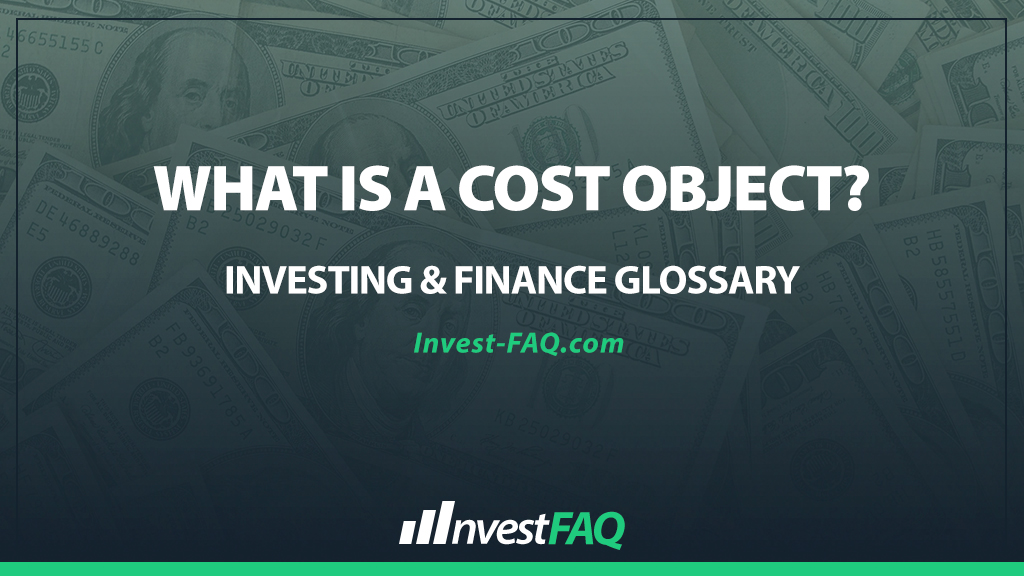
Cost Object
Contents
A cost object is any item, activity, or project for which a separate measurement of costs is desired. It can include products, services, departments, projects, and activities, serving as a focal point for the allocation of costs in accounting and financial analysis.
In business, cost objects are used extensively to track and manage costs, facilitate strategic planning, and enhance decision-making processes.
By identifying cost objects, companies can assign costs directly or indirectly, enabling them to determine the profitability of various segments of their operations. This approach is crucial for budgeting, setting prices, managing expenses, and evaluating the financial performance of specific products, services, or projects.
Example of a Cost Object
Imagine “Bella Boutique,” a clothing manufacturer, wants to determine the cost of producing a particular line of dresses. In this case, the dress line is considered a cost object. Direct costs such as fabric, labor, and accessories amount to $50 per dress. Indirect costs, including factory overhead like utilities and rent, are allocated based on labor hours, adding another $15 per dress. The total cost assigned to the cost object, the dress line, is $65 per dress.
In this scenario, identifying the dress line as a cost object allows Bella Boutique to allocate both direct and indirect costs specifically to it.
This cost assignment is crucial for determining the line’s profitability, setting its price point, and making informed decisions about production volumes, marketing strategies, and potential design modifications. By understanding the complete cost structure of the dress line, Bella Boutique can better manage its resources, optimize its operations, and improve its financial outcomes.
Types and Uses in Business Scenarios
Cost objects are integral to various business scenarios, including:
Product Costing: Assigning costs to individual products to determine their profitability.
Budgeting: Allocating costs to departments or projects for budgeting and control purposes.
Cost Control: Analyzing costs associated with specific activities or projects to identify inefficiencies and cost-saving opportunities.
Performance Evaluation: Assessing the financial performance of different segments of the business, such as departments, product lines, or services.
The application of cost objects across these scenarios enables more accurate financial planning, reporting, and analysis, facilitating better strategic and operational decisions.
Significance for Investing & Finance
The concept of a cost object is significant in accounting for several reasons:
Accurate Cost Allocation: It allows for the precise allocation of costs, ensuring that financial statements reflect the true cost of operations.
Profitability Analysis: Cost objects enable businesses to perform detailed profitability analyses, identifying which areas of the business are most and least profitable.
Decision Support: By providing detailed cost information, cost objects support strategic decisions related to pricing, investment, and resource allocation.
In summary, a cost object is a foundational concept in cost accounting, enabling businesses to allocate, track, and manage costs effectively.
By focusing on specific cost objects, companies can gain valuable insights into their operations, leading to improved profitability, efficiency, and strategic alignment.
FAQ
How do cost objects facilitate more accurate product pricing?
By assigning direct and indirect costs to specific cost objects like products, businesses can accurately calculate the total cost of production, enabling them to set prices that cover costs and achieve desired profit margins.
Can a department within a company be considered a cost object?
Yes, a department can be considered a cost object when its costs are separately tracked to assess its efficiency, manage its budget, and evaluate its contribution to the company’s profitability.
What role do cost objects play in activity-based costing?
In activity-based costing, cost objects are crucial for assigning costs based on actual activities performed, leading to more precise cost allocation and a better understanding of the drivers of costs in producing a product or delivering a service.
How does identifying cost objects impact financial decision-making?
Identifying cost objects provides detailed insights into where and how costs are incurred, aiding in financial decision-making by highlighting areas for cost control, investment, and resource optimization.
